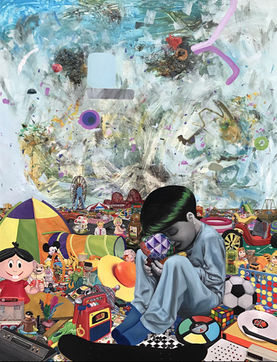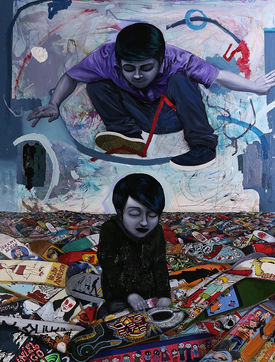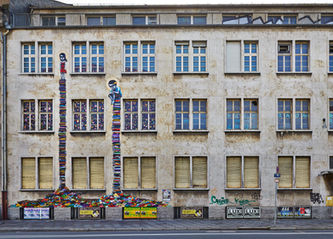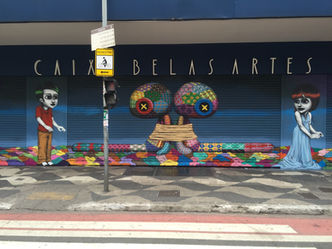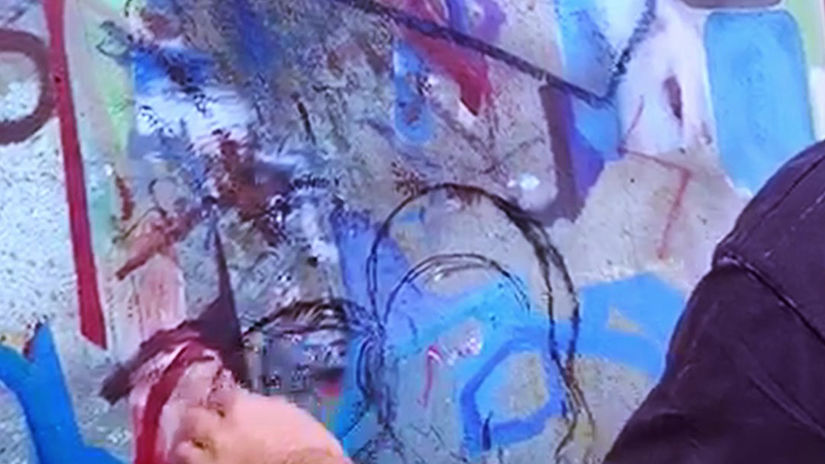
São Paulo, SP - 1973
Lives and works in São Paulo, SP
Tinho began his career in the 80’s integrating a generation of artists with consciousness to take on urban art production as a poetic strategy of recognition, not only of their own city but as their language, powerful and comparable to the traditional ones of art history. His production, representing major importance to the contemporary Brazilian scene, proves itself, along with other talents of the time, a pioneer.
The artist, like many of his generation, start with graffiti, using the city as its host. Later on he moves to painting, the foundation of his academic education, with more emphasis, followed by photography and installations that feature as protagonists the characters that accompany him since the beginning. His work is contextualised by one's place in an urban area. It is permeated with the constant acidic and citric atmosphere of characters that hide, under their neutral aesthetic, persistent loneliness.
works
RAG DOLLS
Tinho sees his Rag Doll as an expression of affection. His production is artisanal, using leftover fabrics and promoting reuse. Each piece of fabric symbolizes an experience, a representation of the human being. In contrast to the industry, where toys are mass-produced, with an exclusive focus on profit, encouraging excessive consumption and disposability, these unique, artisanal dolls are analog relics in an increasingly digital millennium.
YOU ARE WHAT YOU WEAR!
In this series the focus is on personal identification and how each individual chooses to be represented through their clothing. The paintings invite the observer to reflect on the freedom of choice and authenticity in the way we present ourselves to the world. They remind us that our clothes are a powerful form of communication and self expression, allowing each person to identify themselves in the way that feels most comfortable and authentic. It is an invitation to celebrate diversity and respect the individual choices of each person in constructing their visual identity.
BRANDS OF POWER
The paintings from the "Brands of Power" series feature, in place of fabric patches, the big luxury brands such as Vogue, Louis Vuitton, Chanel, and Dior, as well as others such as Nike, EA Sports, Tiktok, Globo, BBC, Nintendo, Itau Bank, iFood, Dell, Apple, national flags, to construct their dolls.
In this series, Tinho onirically portrays his cloth dolls as protagonists, and directly and objectively inserts logos of big brands stamped on the bodies of these characters, bringing to the surface issues about social construction, identity symbols, and belonging in certain groups and forms of expression. Tinho raises some questions: what makes an individual choose certain brands? Do they have that power of distinction? How does the desire for consumption of these brands penetrate individually and collectively? How in the globalized media world are brands symbols of identification? And when certain groups, previously subordinated, start to consume these brands?
Tinho also brings up identification with the other - the "I" reflected in the other - and questions the very identity of the SELF. Far from being able to answer these questions, but rather shed light on the subject, Tinho points to a kind of "behavior replication machine," where we see individuals often adhering to brands and ways of life based on a belief, almost a "faith" in the construction of the identity of the consumption product, and furthermore, in the distinction or acceptance in certain groups. And it is this replicability that can be observed in this new garb of the dolls painted by the artist.

THE 7 SEAS
This series was the theme of an important exhibition at the Paço Imperial, Rio de Janeiro. It is made up of 7 paintings that portray an ocean of objects of the artist's poetic universe. The references include discs, films, books, famous artworks, skateboard shapes, toys and fashion. The oceans suggested by Tinho aren't only external, but also internal. They reference his livings, his image repertoires, the places where he navigated and continues to navigate. They are oceans of inspiration, his own blows. The series that, to the artist, is the realization of a dream, constitutes itself as an homage to everyone and everything that fed and continue to feed his development. It is a look at the past, an observance of what surrounds him on a daily basis. It is synthesis and the eternal reoccurrence of his repertoire. It is also his own fascination before those images. Tinho's latent oceans portray themselves here as an invitation for the spectator to walk into his world of references and understand how each object influenced his personal and professional journey.
To know the 7 Seas means to know his world.
THE UNFOLDINGS OF THE 7 SEAS
Having as a basis The 7 seas, Tinho begins a phase where he represents their unfoldings from the fusion of their references. In these compositions the disorder is something remarkable, purposeful and positive in nature. Using an interactive flow between figuration and abstraction, the artist seeks in chaos a form of reconstruction of the world, where culture, fantasy and the virtual world mix in the form of references, memories, ideas, thoughts. And he shows us that there is a way back to balance. Thus, each canvas presents itself as a visual manifestation of the saying "After the storm comes the bonanza".
































